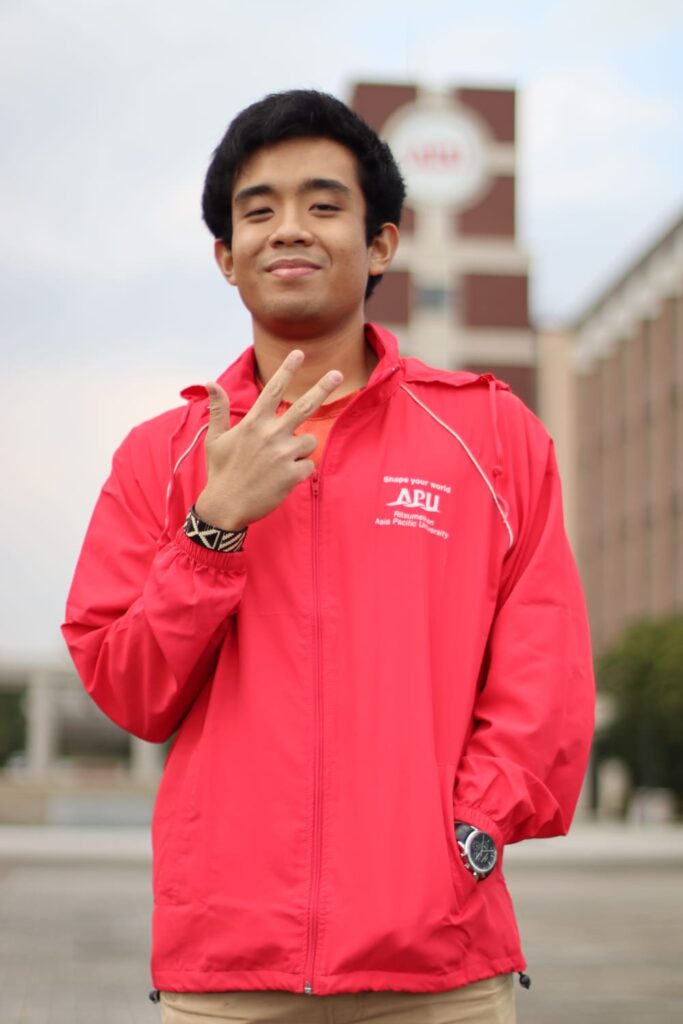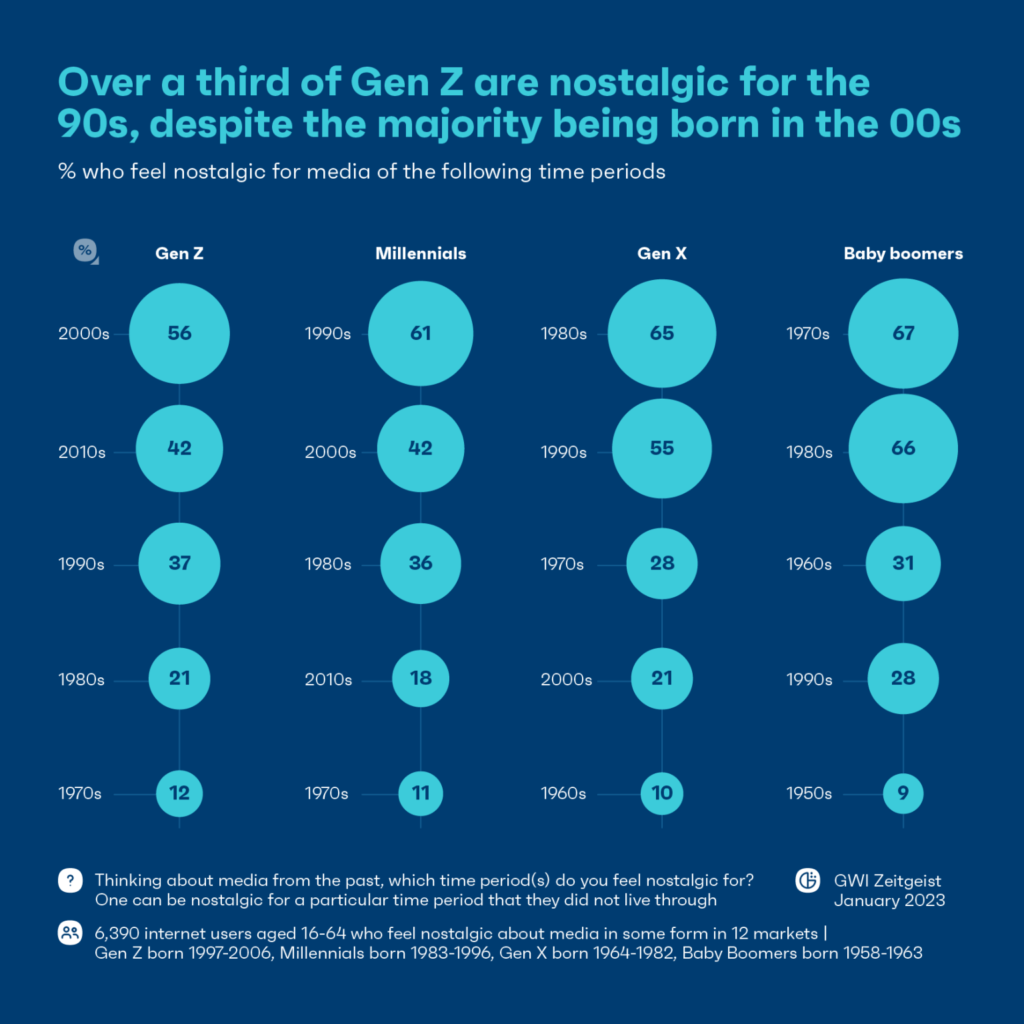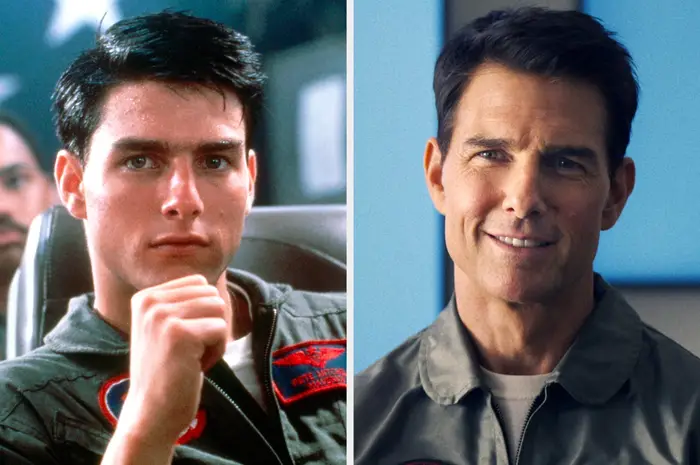Generation Z, or Gen Z, are people born between 1997-2006. Interestingly, this generation feels nostalgic about the 90s even when most were not even alive yet. In fact, they spend big on trends associated with nostalgia. A recent study by GWI Zeitgeist shows that 7 out of 10 Gen Z-ers think about media from earlier decades. 37% of them feel nostalgic toward the 90s pop culture by watching movies, tuning to songs, and buying fashion of that time. Perhaps, Gen Z’s tough experience in their youth plagued by high inflation, the Covid-19 pandemic, and relentless online reports of wars and conflicts around the world have exhausted their ideals. For them, the 90s might symbolize a carefree time for Gen Zs where everything feels “just perfect” and they have fewer problems on their shoulders.
These are not bland sentiments; they are a real social phenomenon that starts to shape consumer behaviors and cause unique shopping patterns. Older fashion styles such as the Y2K fashion, puddle pants, and vintage clothes have resurfaced. Vintage fashion styles, along with the thrifting industry, have all grown in market value, reaching up to $35 billions just in 2020. Gen Z’s high degree of environmental awareness as well as their campaign against fast fashion have certainly contributed to this retro purchasing pattern. Practically, Gen Z are not shy from wearing old outfits; they are embracing the carefree era before their times.
The nostalgic shopping spree is also fueled by Tiktok’s all-encompassing influence among young adults. Unheard melodies like Kate Bush’s 1985 song “Running Up That Hill”, Earth, Wind and Fire’s 1981 released single “Let’s Groove”, or the older version of “Just the Two of Us” by Bill Withers that was released in 1980, got their new listeners through social media’s captivating power over its young users.
Luxury brands have taken notice of this popular instance where retailer giants such as Louis Vuitton and its numerous maisons; Fendi, Ferragamo, and Marc Jacobs, have all released new bags with vintage elements sewn in them. Haute couture fashion houses incorporated nostalgia in their marketing such as Coach’s drive-in cinema-themed runway show and Balenciaga’s faux fur store in London. Cosmetics makers like Kate Spade also imbued early 2000s nostalgia with the launch of a new lip gloss line.
Nostalgia is not a static experience; it is a thought process of recalling or re-experiencing the past. However, Gen Z’s current saturation over nostalgia runs not just because it boosted the drive toward retro outfits and old songs, they are also in tune with things they have never physically experienced before. The success of the Top Gun movie remakes; the numerous 40-year-old movie franchises and TV serials such as Indiana Jones, the Addams Family; or making an entirely new film out of nostalgic fares, like the box office Barbie movie.
Nostalgia serves a very interesting purpose of comforting, even for a generation that might have not yet been born during the prime of the 90s content. Krysten Batcho, LeMoyne College psychology professor, said that nostalgia brings “emotional comfort” while encouraging the audience that the future will be better, “because things have been good before.”
On the other hand, they also use nostalgia to practice escapism. The term “Escapism” means a habitual diversion from daily routine to seek pleasures through entertainment. Recently, vintage, retro, and classic content have seen an influx in the internet search. Nostalgia is a good example of escapism, specifically its function of giving breaks from the craziness of hectic life or calming the mind from dire situations unraveling in the news. Batcho again reiterates nostalgia as a “refuge for comfort and security” most people might not receive these days. Surviving almost three years of solitude and confinement due to COVID-19 restrictions has severely impacted everyone’s mental health. Not to mention, the youth today also suffered major emotional heartbreak of being unable to interact with their peers as online schooling took over. The period of early adulthood has never been more challenging than during the pandemic, with job opportunities plummeting and leaving many hopeful graduates depressed and disoriented.
However, this boom of nostalgia-driven shopping spree is being capitalized by companies all around the globe and it may well be the new trend of mass consumption. GWI suggests that although the trend is likely to continue for a while, the social and cultural values of the 1990s and 2000s are no longer compatible with the more inclusive and open-minded Gen Zs. Companies need to be careful in treading the balance between a creative process of imbuing nostalgic elements without invoking media backlash for inappropriate characterization of their market. This could be exemplified by the “body positivity” sentiments that have started to be embraced by fashion magazines as well as beauty retailers in order to capture the attention of the growing young consumers market without offending their ideal spirits. This resurgence of nostalgia-driven consumption serves as yet another example of a global online trend initiated by youth worldwide.

About the Writer
Muhammad Rayhansyah Jasin
Rayhan aspires to be an academic journalist and he is trying to start this journey by becoming APU Times’ Head of Journalist Department and a writer in AYO Post. As an IR student at Ritsumeikan Asia Pacific University, he really likes to debate and write other people’s perspectives in his preposition to bridge differing minds. He’s a hands-on traveler who appreciates history and urban-people culture more than nature-based adventures.



